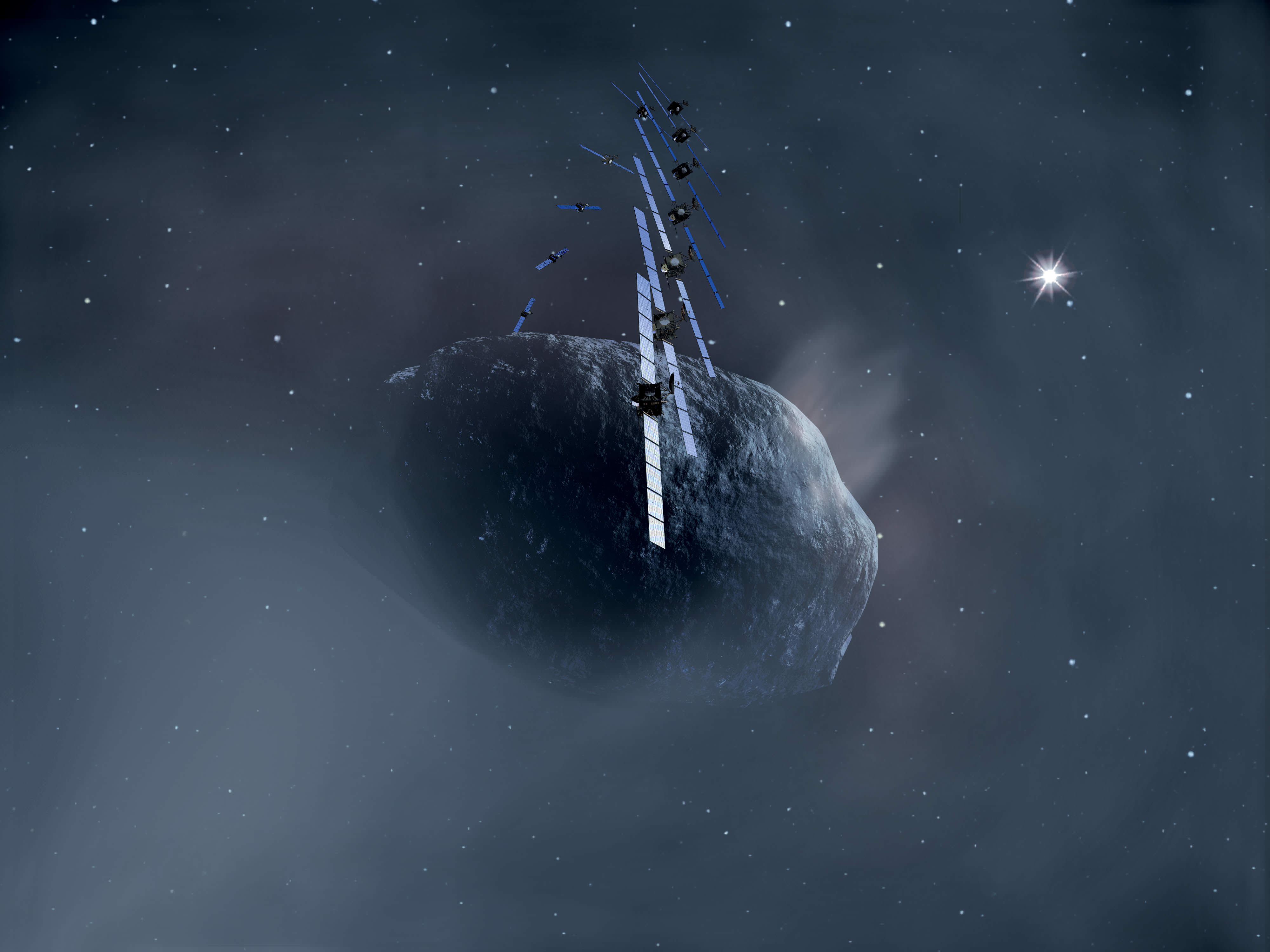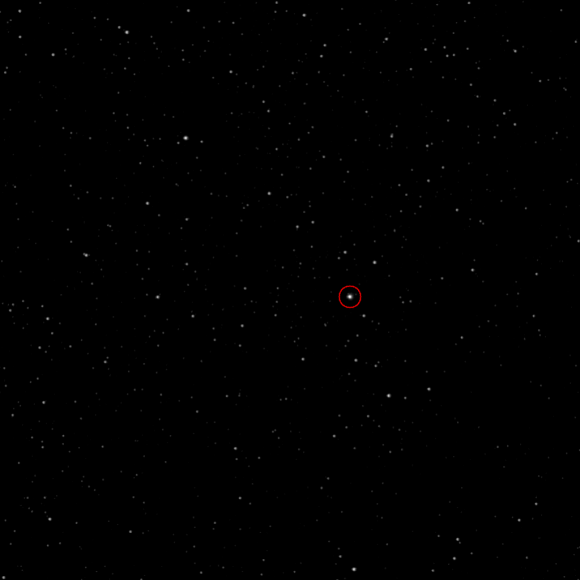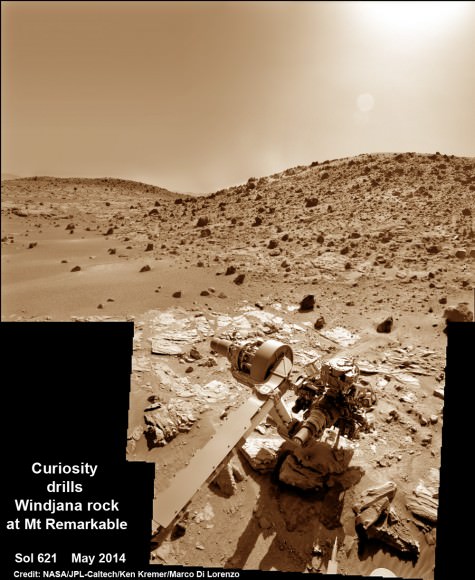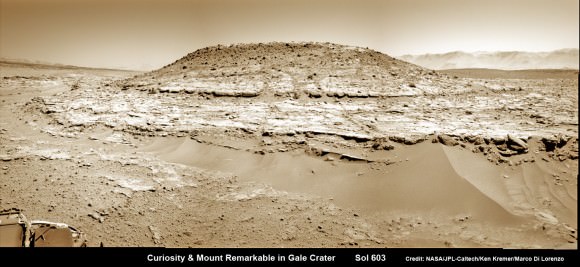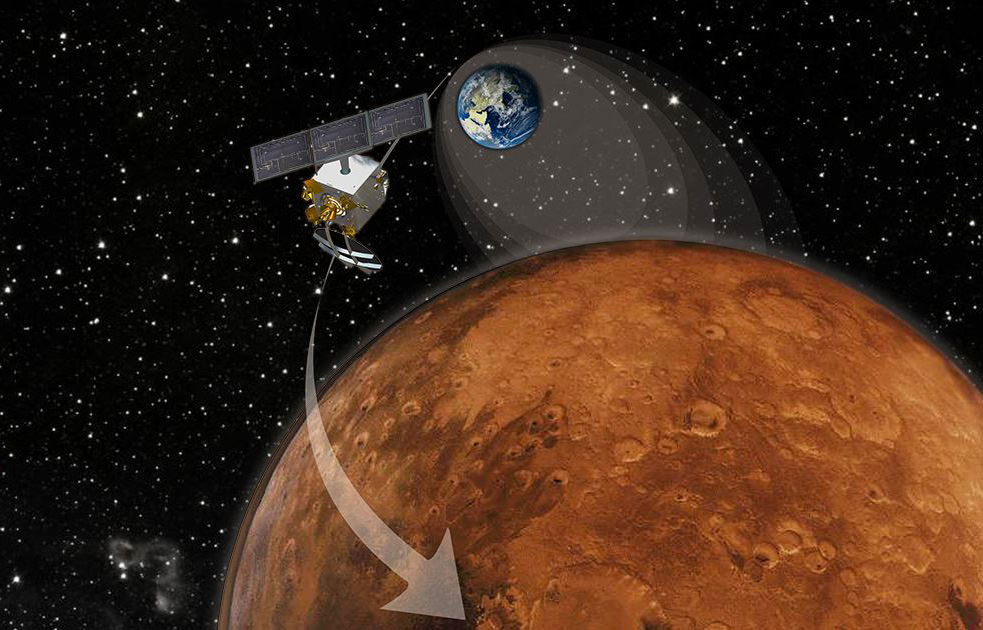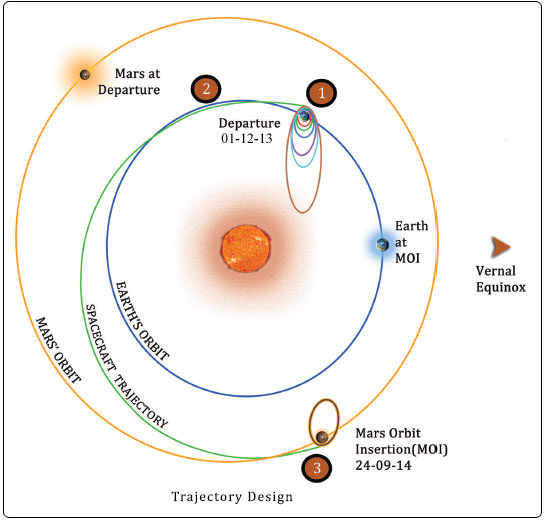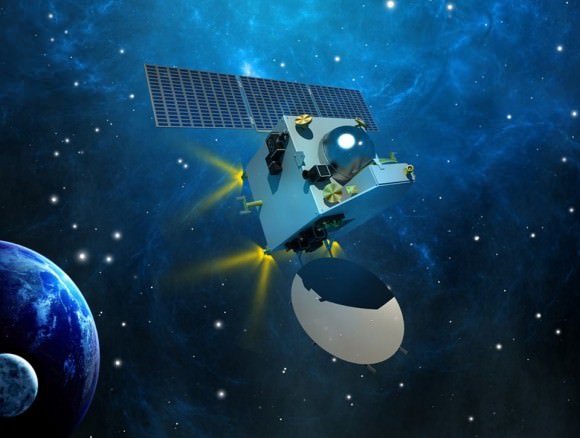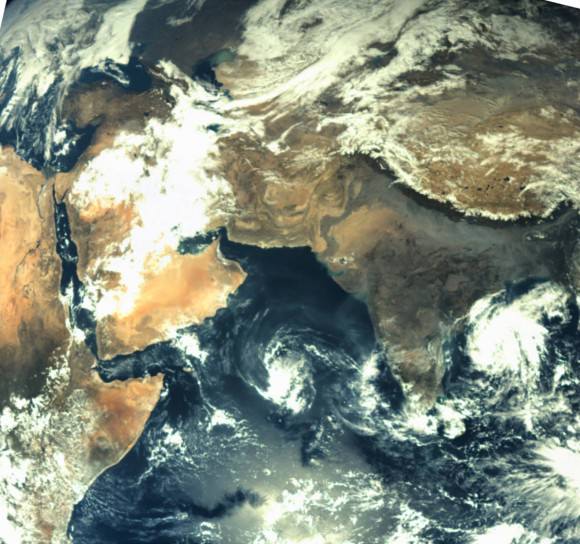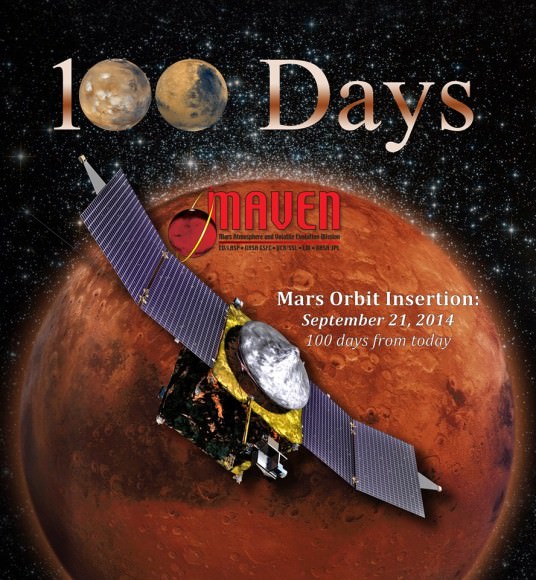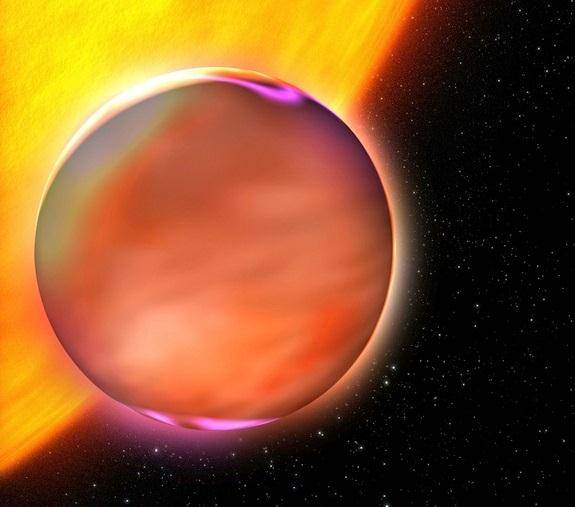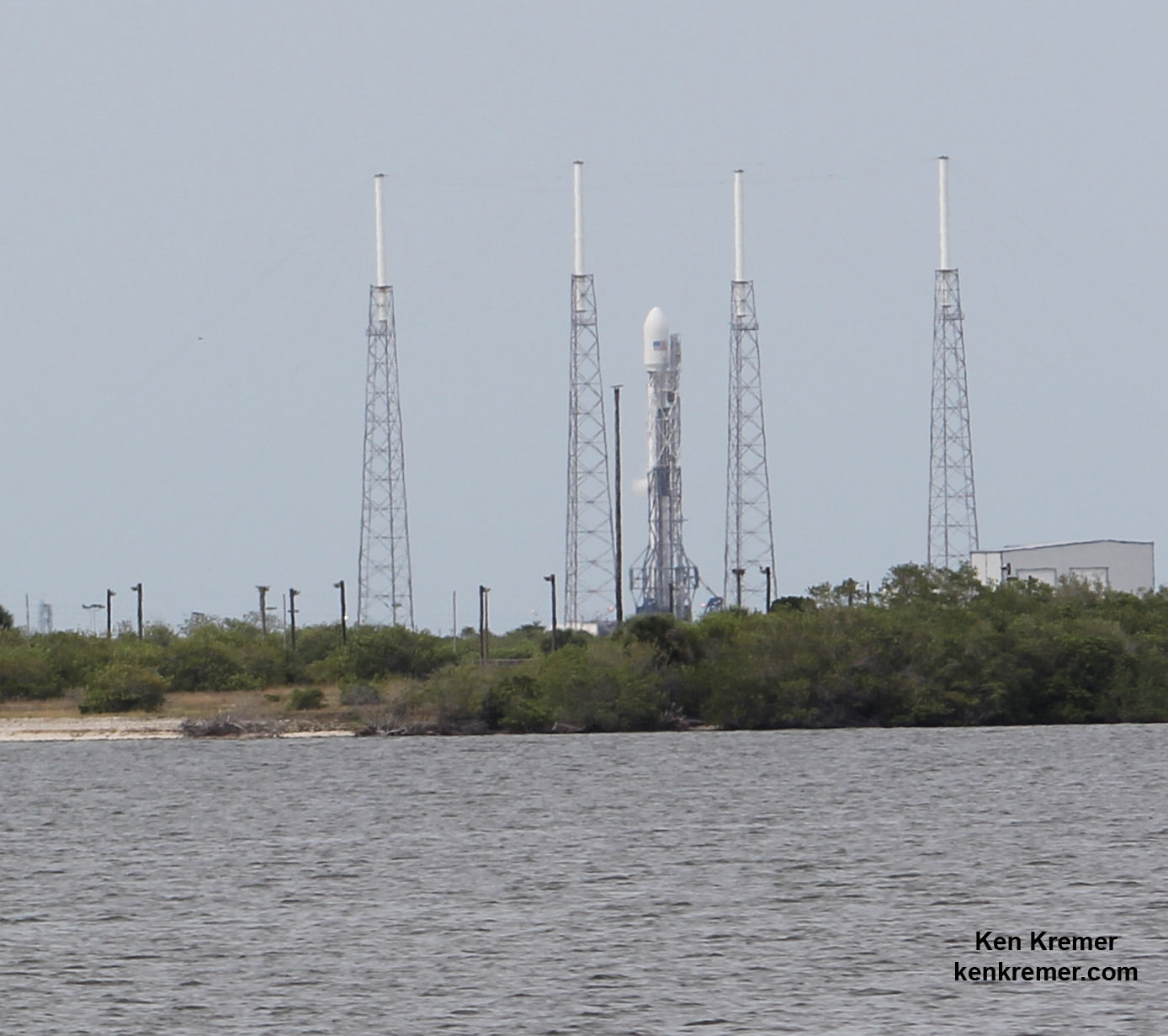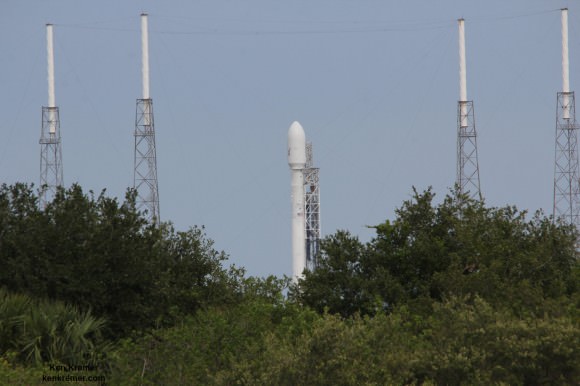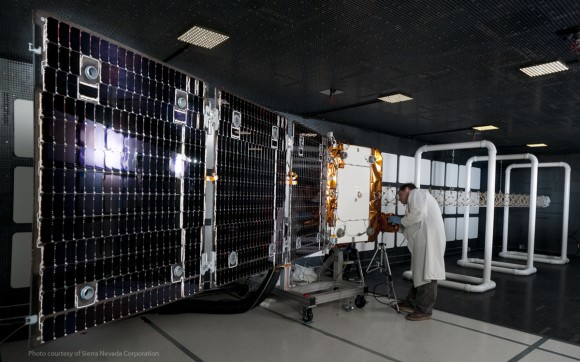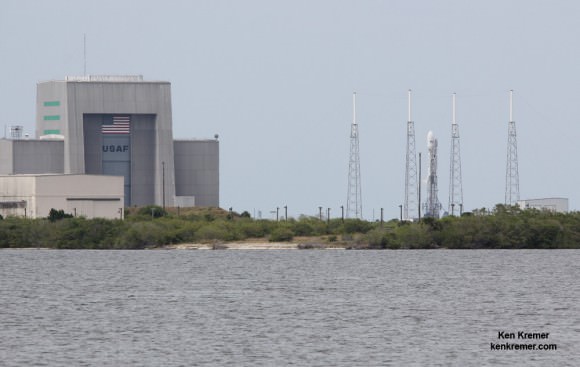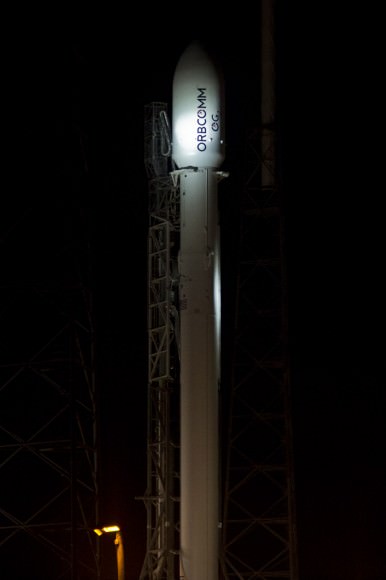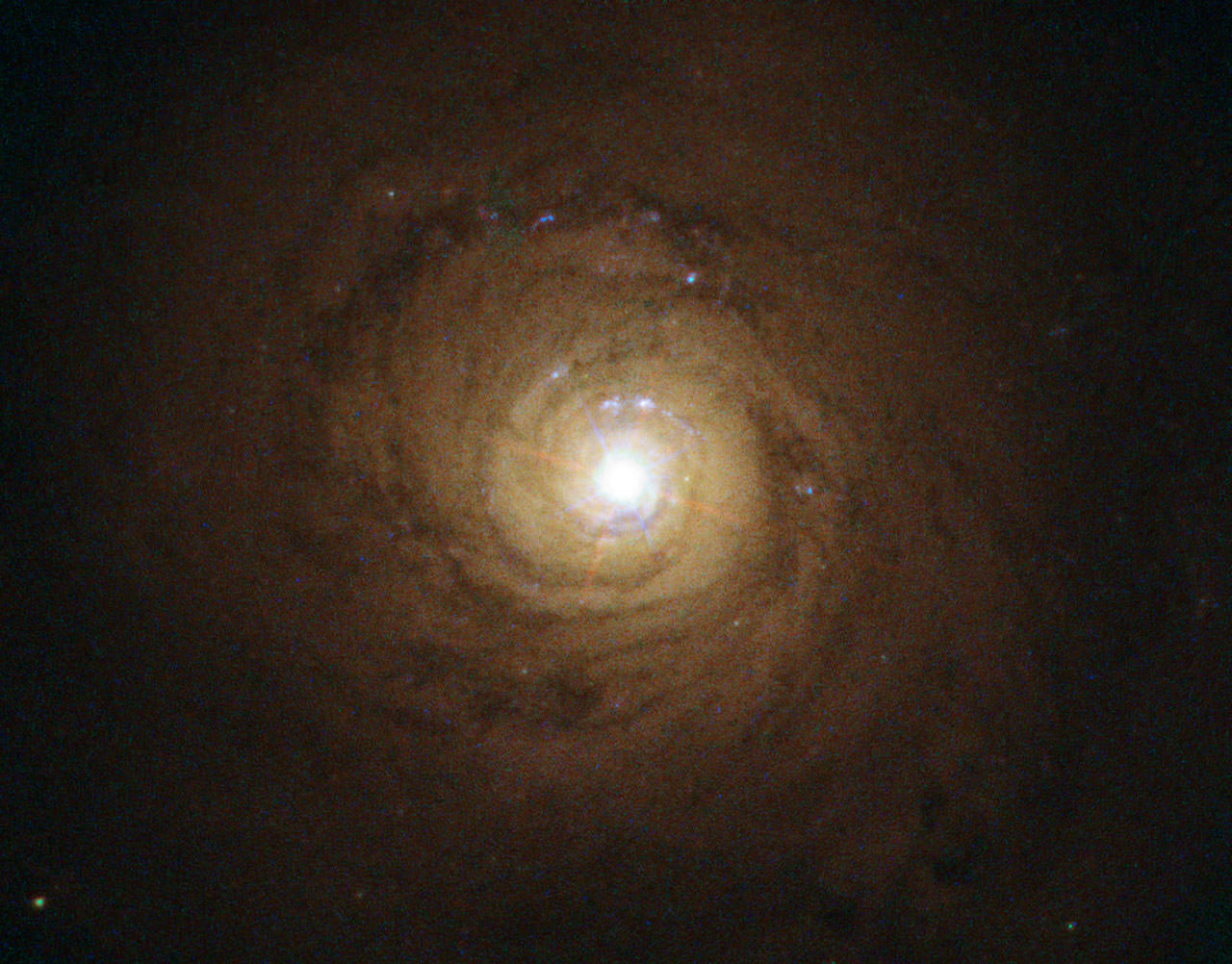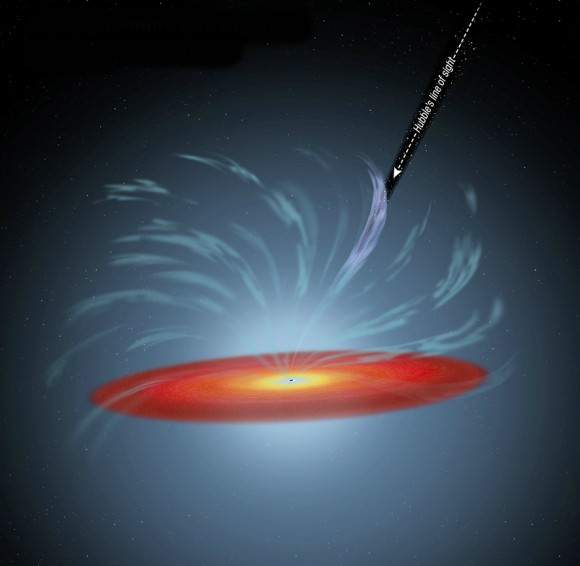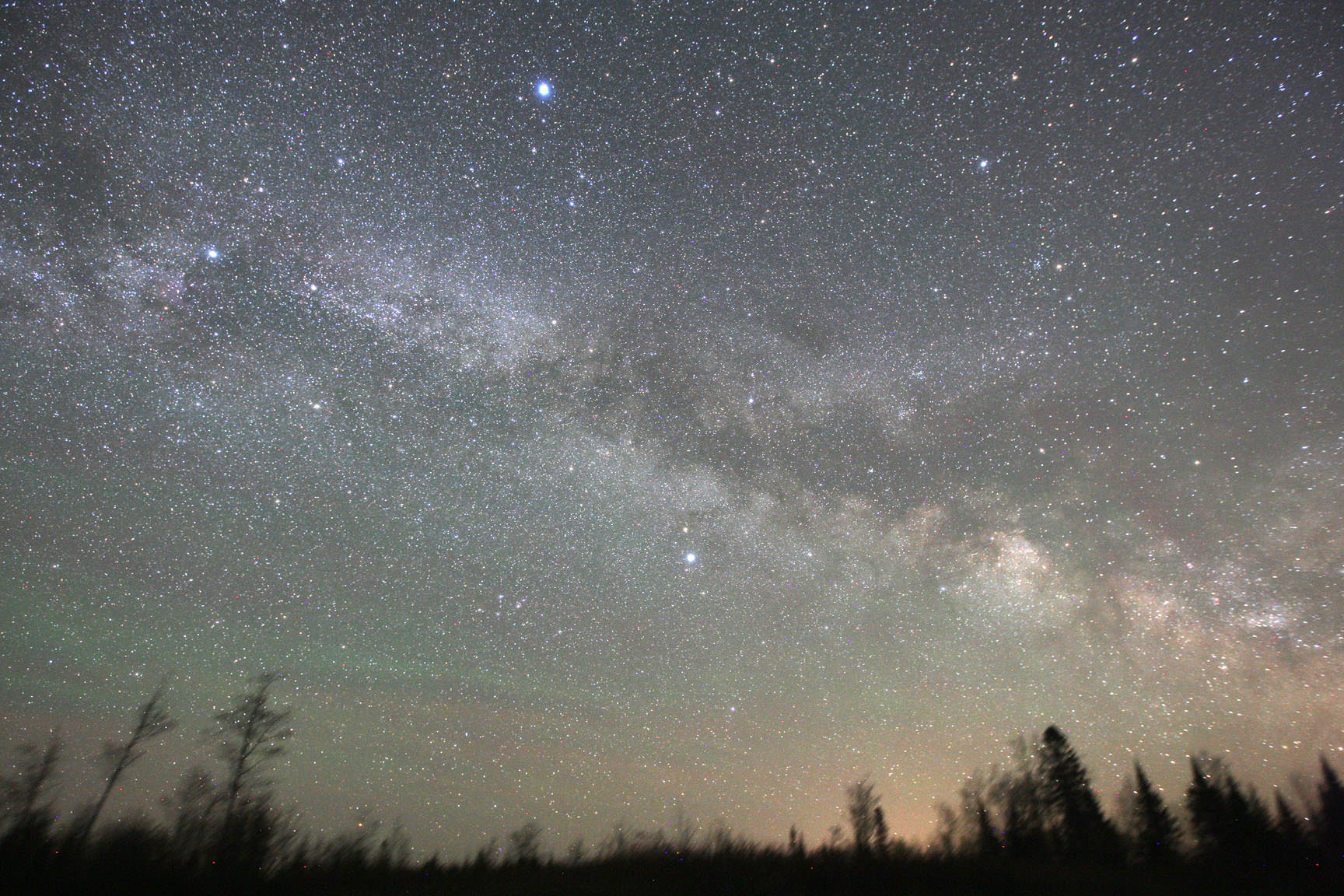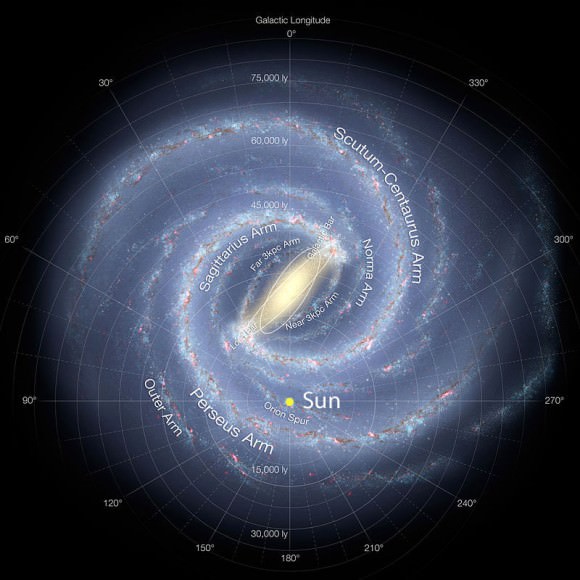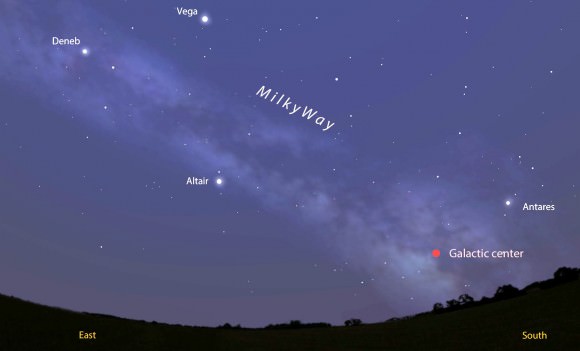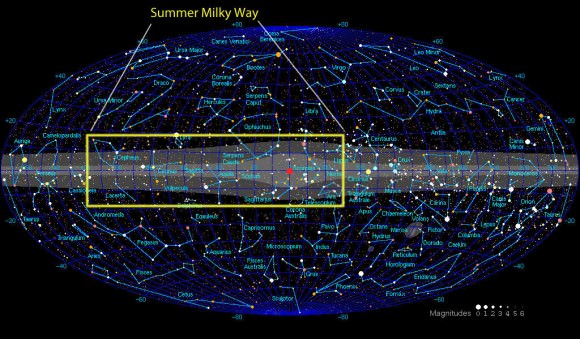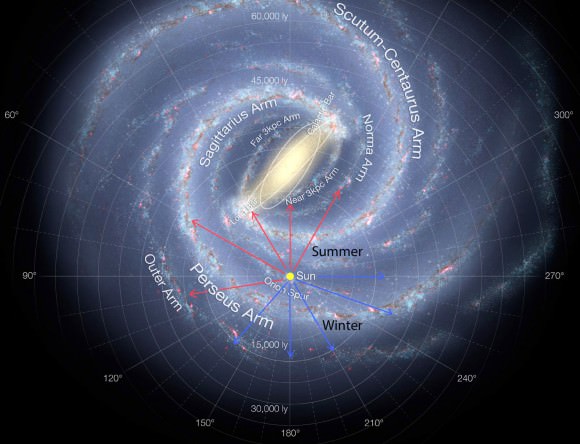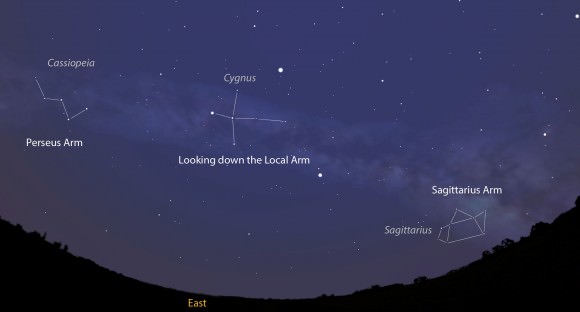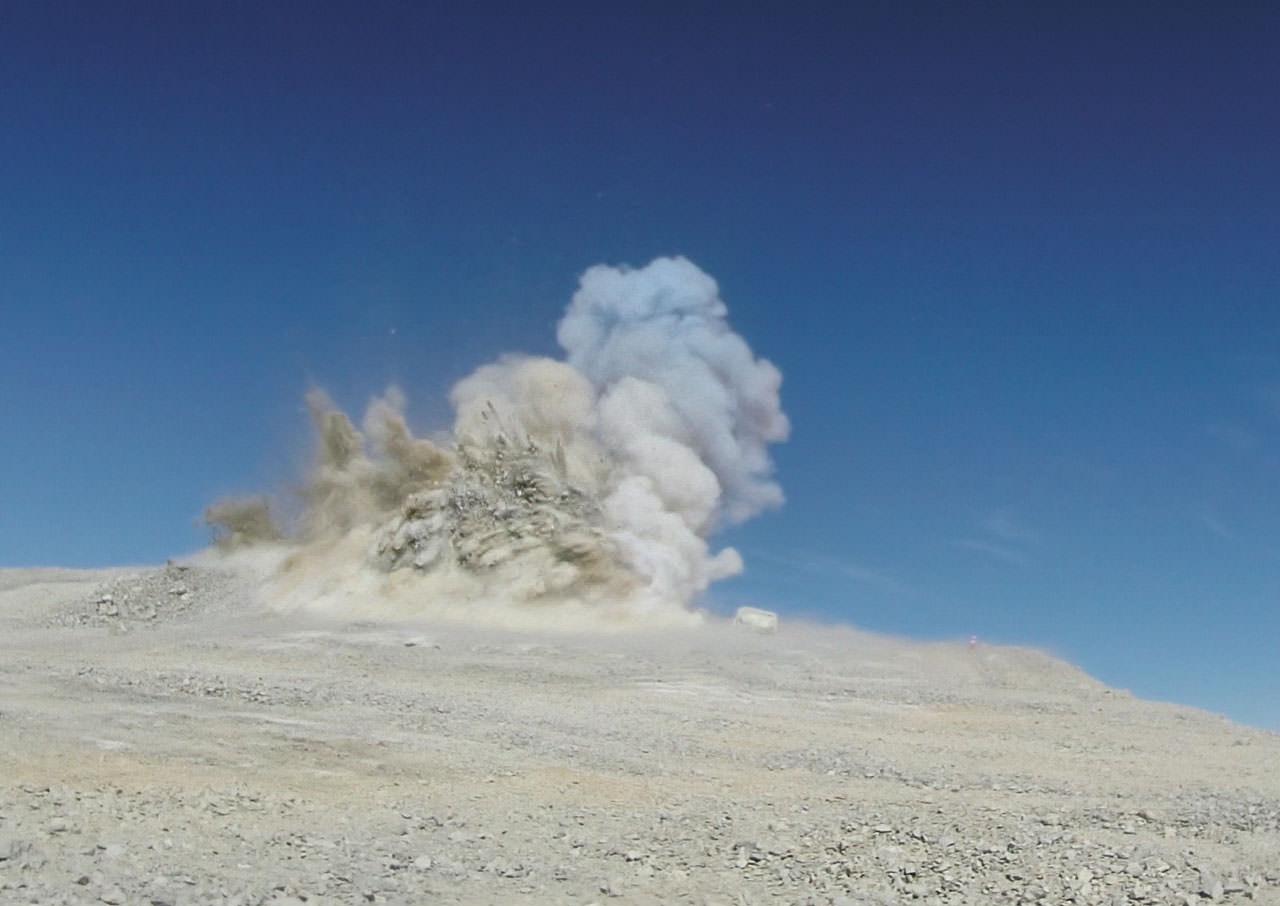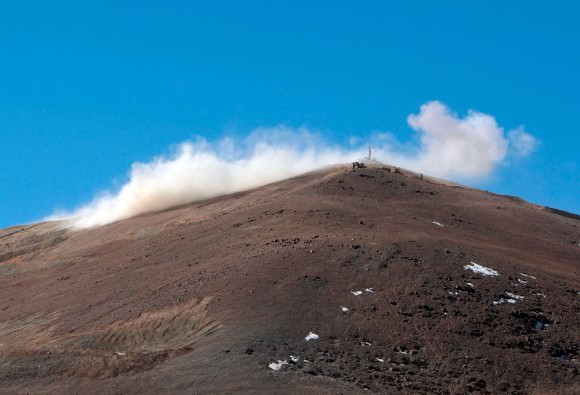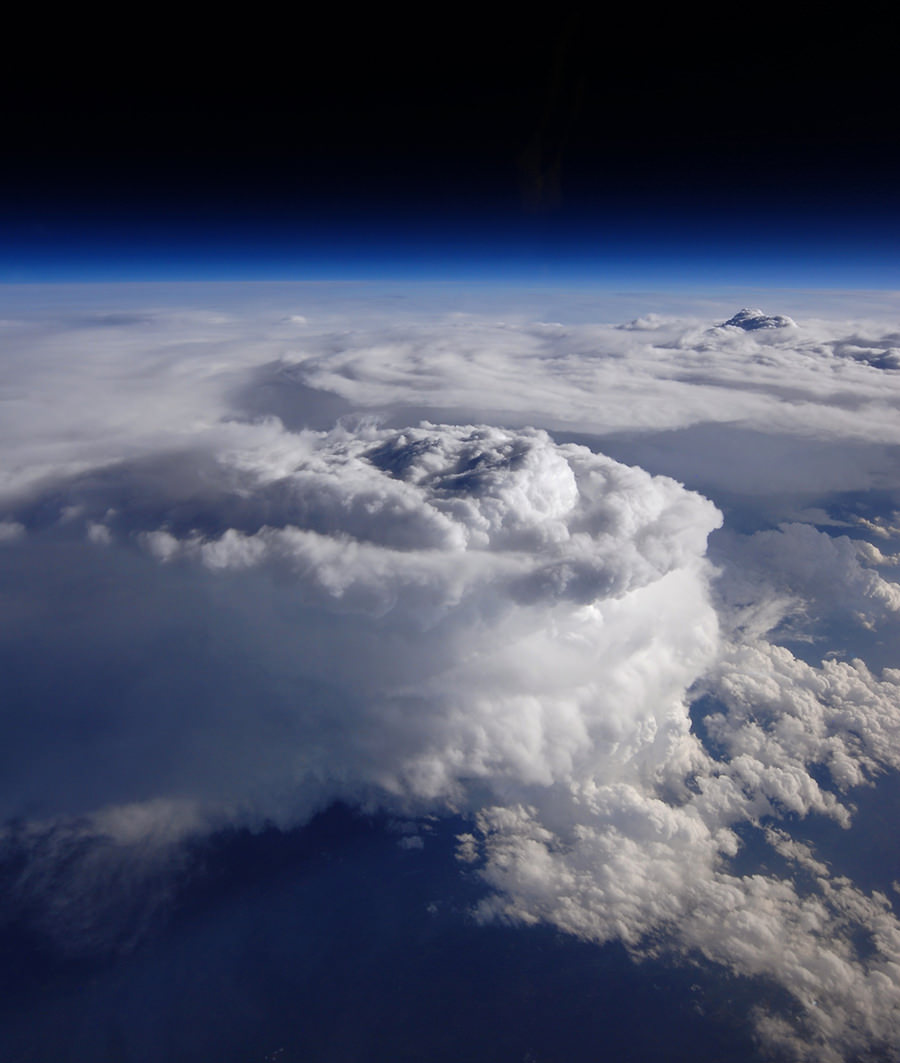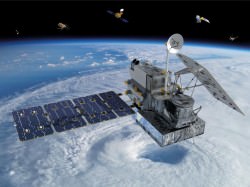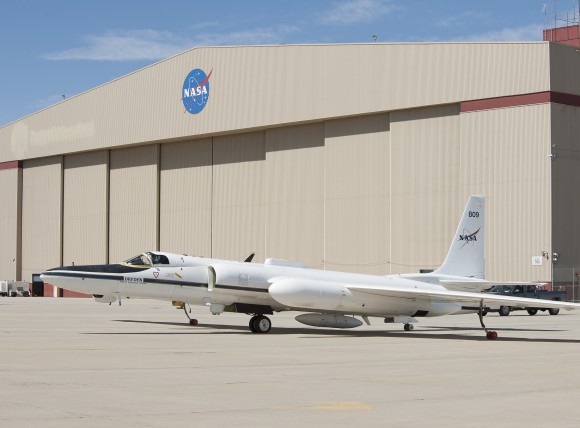The summer astronomical action heats up this week, as the waning crescent Moon joins the inner planets at dawn. This week’s action comes hot on the tails of the northward solstice which occurred this past weekend, which fell on June 21st in 2014, marking the start of astronomical summer in the northern hemisphere and winter in the southern. This also means that the ecliptic angle at dawn for mid-northern latitude observers will run southward from the northeast early in the morning sky. And although the longest day was June 21st, the earliest sunrise from 40 degrees north latitude was June 14th and the latest sunset occurs on June 27th. We’re slowly taking back the night!
The dawn patrol action begins tomorrow, as the waning crescent Moon slides by Venus low in the dawn sky Tuesday morning. Geocentric (Earth-centered) conjunction occurs on June 24th at around 13:00 Universal Time/9:00 AM EDT, as the 8% illuminated Moon sits 1.3 degrees — just shy of three Full Moon diameters — from -3.8 magnitude Venus. Also note that the open cluster the Pleiades (Messier 45) sits nearby. Well, nearby as seen from our Earthbound vantage point… the Moon is just over one light second away, Venus is 11 light minutes away, and the Pleiades are about 400 light years distant.
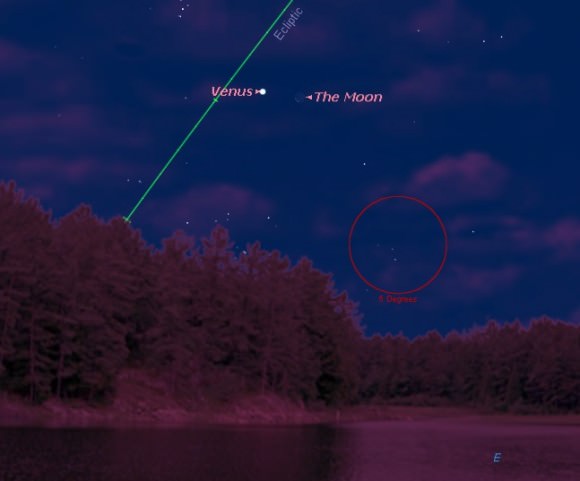
And speaking of the Pleiades, Venus will once again meet the cluster in 2020 in the dusk sky, just like it did in 2012. This is the result of an eight year cycle, where apparitions of Venus roughly repeat. Unfortunately we won’t, however, get another transit of Venus across the face of the Sun until 2117!
Can you follow the crescent Moon up in to the daytime sky? Tuesday is also a great time to hunt for Venus in the daytime sky, using the nearby crescent Moon as a guide. Both sit about 32 degrees from the Sun on June 24th. Just make sure you physically block the dazzling Sun behind a building or hill in your quest.
From there, the waning Moon continues to thin on successive mornings as it heads towards New phase on Friday, June 27th at 8:09 UT/4:09 AM EDT and the start of lunation 1132. You might be able to spy the uber-thin Moon about 20-24 hours from to New on the morning prior. The Moon will also occult (pass in front of) Mercury Thursday morning, as the planet just begins its dawn apparition and emerges from the glare of the Sun.
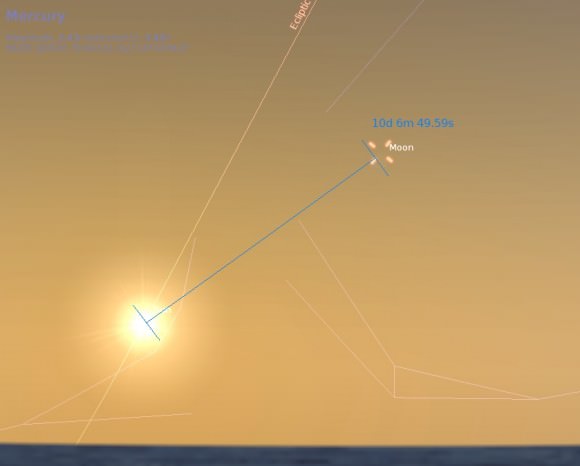
Unfortunately, catching the event will be a challenge. Mercury is almost always occulted by the Moon in the daytime due to its close proximity to the Sun. The footprint of the occultation runs from the Middle East across North Africa to the southeastern U.S. and northern South America, but only a thin sliver of land from northern Alabama to Venezuela will see the occultation begin just before sunrise… for the remainder of the U.S. SE, the occultation will be underway at sunrise and Mercury will emerge from behind the dark limb of the Moon in daylight.
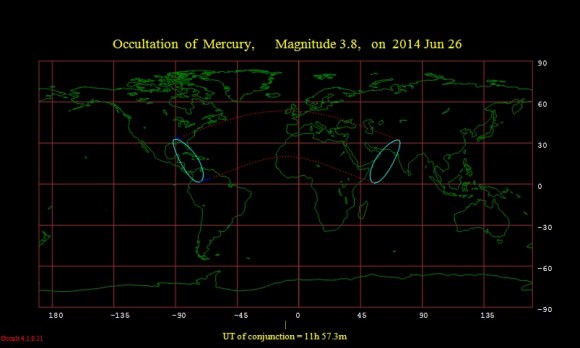
Mercury and the Moon sit 10 degrees from the Sun during the event. Stargazer and veteran daytime planet hunter Shahrin Ahmad based in Malaysia notes that while it is possible to catch Mercury at 10 degrees from the Sun in the daytime using proper precautions, it’ll shine at magnitude +3.5, almost a full 5 magnitudes (100 times) fainter than its maximum possible brightness of -1.5. The only other occultation of Mercury by the Moon in 2014 favors Australia and New Zealand on October 22nd.
This current morning apparition of Mercury this July is equally favorable for the southern hemisphere, and the planet reaches 20.9 degrees elongation west of the Sun on July 12th.
You can see Mercury crossing the field of view of SOHO’s LASCO C3 camera from left to right recently, along with comet C/2014 E2 Jacques as a small moving dot down at about the 7 o’clock position.
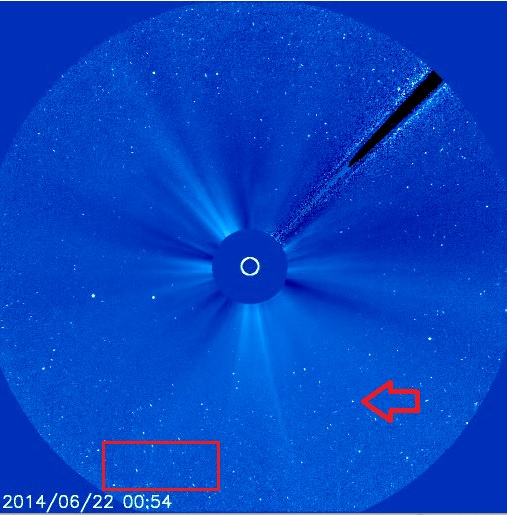
And keep an eye on the morning action this summer, as Jupiter joins the morning roundup in August for a fine pairing with Venus on August 18th.
The Moon will then reemerge in the dusk evening sky this weekend and may just be visible as a 40-44 hour old crescent on Saturday night June 28th. The appearance of the returning Moon this month also marks the start of the month of Ramadan on the Islamic calendar, a month of fasting. The Muslim calendar is strictly based on the lunar cycle, and thus loses about 11 days per year compared to the Gregorian calendar, which strives to keep the tropical and sidereal solar years in sync. On years when the sighting of the crescent Moon is right on the edge of theoretical observability, there can actually be some debate as to the exact evening on which Ramadan will begin.
Don’t miss the wanderings of our nearest natural neighbor across the dawn and dusk sky this week!


